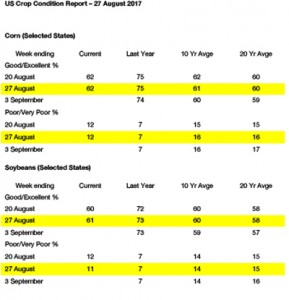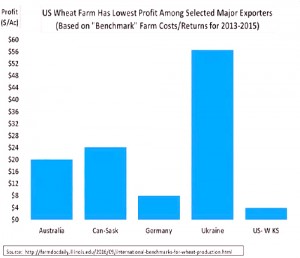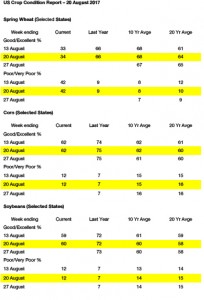- We have seen another session in Chicago where prices have been broadly in positive territory. Soybean oil is flirting with multi-month highs on the back of suggestions that lower than expected oil content in soybeans as a consequence of cooler finishing temperatures this growing season. Crude oil remains on the up, gaining another $0.80/barrel whilst the US$ tests the 92 point index level, below this there is little technical support until 90, so we may be at a pivotal point.
- Brazil’s CONAB this morning projected first crop corn seedings to decline, which is not surprising given very weak interior cash prices there. Cotton and soybean acreage is forecast to expand modestly. Note that cash corn in Parana (a major producer of both 1st and 2nd crop corn) this morning rests at $100/mt ($2.55/bu), vs. $160/mt ($4.10/bu) on this week a year ago. Strength in Brazil’s currency has exacerbated losses in Chicago markets.
- StatsCan published its July 31st stocks report, which included all-wheat stocks of 6.9 million mt, vs. 5.2 million a year ago, and canola stocks of 1.3 million mt, vs. 2.1 million. These numbers are generally in line with USDA’s annual balance sheets, but also confirm that year-end Canadian canola stocks will be a very tight 200-250,000 mt. Some degree of canola rationing will be needed in Canada this year, and the market’s premium to soybeans, $50-55/mt, persists. Note also that the Canadian dollar has posted new two year high this morning.
- It is another macro-themed day, aided a bit by further soil moisture loss into the end of the growing season. Whether lasting bottoms have been scored will hinge upon the direction of yield updates in next week’s WASDE, and ou opinion is that we have to wait on actual combine data before there is any real clarification on US crop size. We do mention that S America’s corn market bottomed in late July, and Black Sea wheat prices have stabilised as harvest there surpasses 60%.







